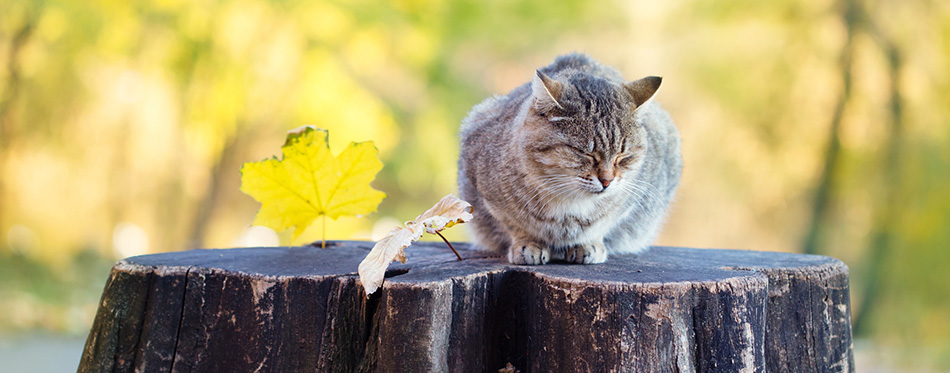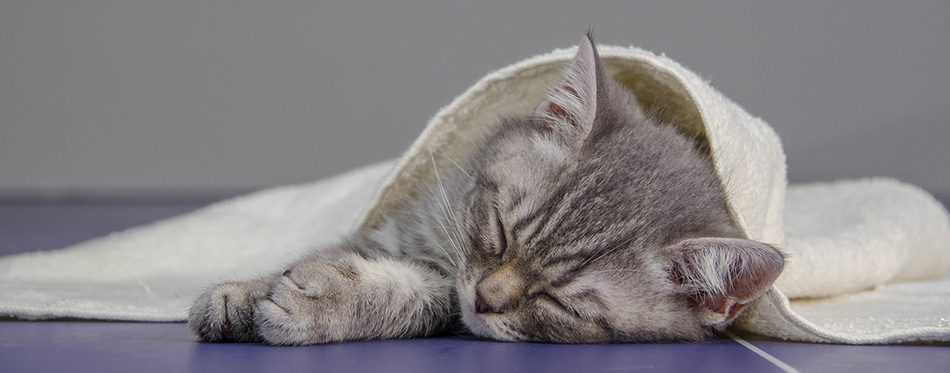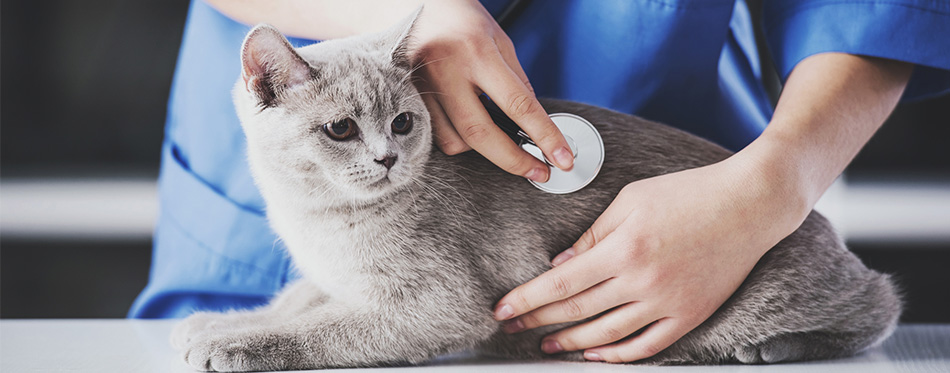Vomiting is a sign of something that is wrong in the cat. Anything that can irritate the cat’s stomach lining can trigger a response that ends in vomiting. This is the forceful evacuation of stomach contents through the mouth of the cat. It is a sight that no pet parent wants to witness, yet it is also a sign that they should never dismiss. Whether it is a simple act of expelling a hairball or a sign of a more serious health problem, it’s imperative that you know what to do in case your cat throws up after eating.

Why Do Cats Vomit?
Cats vomit for a variety of reasons. It can be because of the presence of hairballs in their tummies that they want to expel. Some health conditions like infection, diabetes, and urinary tract disease can also cause vomiting in cats. We shall limit our discussion to those causes that have something to do with ingestion and digestion, however. You may also like our article on cat food for urinary tract health.
- Fast eating
Cats that gobble up their food are at an increased risk of vomiting compared to slow-eaters. One has to understand that cats and other animals do not have their esophagus in an upright position when eating. It’s more horizontal. Pushing food towards the stomach can be difficult. The food can push back on the esophageal sphincter and cause regurgitation of undigested food.
- Food allergies and intolerance
One of the most common causes of vomiting in cats is food allergies and food intolerance. In food intolerance, the digestive system is unable to digest a certain food molecule. What happens is that this undigested food gets expelled through the oral cavity. In some instances, the undigested food also passes straight through the gut and anus as feces. This is often in the form of diarrhea.
As for food allergies, there are certain molecules in cat food that its immune system may recognize as “foreign”. Hence, these cells will mount an allergic reaction to help combat this “unwanted” molecule. Food allergies can manifest through a number of symptoms such as skin irritation, diarrhea, and vomiting, among others. For more options, check out our detailed review of hypoallergenic cat food.
- Change in cat food
Vomiting can also occur in cats that are given a change in their diet. The sudden introduction of a new food molecule can upset the stomach. In other words, the cat’s tummy is not accustomed to the new ingredient. It’s for this reason that pet parents should always change or replace their pet’s food in a gradual manner.
- Presence of hairballs
Hairballs are quite common among cats. In general, hairballs don’t pose an immediate concern since cats can pass them through the anus. However, with the addition of food, there’s a chance that the hairball can get trapped in the bolus of food. This increases the volume of the hairball and can trigger the vomiting reflex in the cat. Take a look at our review of the best cat food for hairballs for more info.
- Poor quality or expired cat food
It is also possible that the cause of vomiting is poor-quality food. These can contain ingredients that the cat’s stomach cannot digest well. The same is true with expired food products. The digestive system of the cat may find a way to expel the “unhealthy” food. Head over to our reviews of dry cat food and wet cat food for more choices.

Vomiting in Cats: When to Worry
It is normal for cats to vomit every now and then. We should keep in mind that vomiting is not a disease. It’s a protective reflex, allowing the cat to remove anything that is unpleasant in its stomach. It’s like coughing. You cough because you’re trying to get rid of something from your throat. In general, if a cat vomits once or three times in a month, it’s still considered normal. So when does it become abnormal?
- Vomiting at least 2x a day for 2-3 days
If the cat vomits for at least two times a day for the past two to three days, the main concern here is not the vomiting anymore. If your kitty is vomiting for the past three days, it is at risk of dehydration, acid-base imbalances, and electrolyte abnormalities. This can lead to other problems such as weakness, heart problems, and central nervous system abnormalities.
- Presence of blood in the vomitus
The presence of blood in the cat’s vomitus is never a good sign. This often indicates injury to the lining of the stomach or the esophagus. It can be due to an active bleeding in the duodenum, the stomach, the esophagus, or the oral cavity of the cat. Blood in the vomitus can also be due to peptic ulcers or injury to the blood vessels in the digestive tract. Acute liver failure, esophageal cancer, and pancreatitis are also possible causes of vomiting blood. There are numerous possibilities as to why your cat may be throwing up fresh, bright red blood after eating. Whatever it is, it’s never a good sign.
- Concomitant diarrhea
The combination of diarrhea and vomiting is never a good sign. Vomiting alone will not result in dehydration that fast. However, if there is concomitant diarrhea, then the problem of dehydration can occur at a much faster rate. Diarrhea not only leads to fluid losses, it also intensifies the imbalance between acids and bases and electrolytes in the cat’s blood. This can further aggravate the problems already caused by vomiting.
- Cat stops eating and drinking altogether
It is understandable that the cat will not want to eat after an episode of vomiting. It can still taste the acidic nature of vomitus in its tongue and throat. Hence, it may not want to eat at all. However, if your kitty is no longer eating for at least 2 days, then it should be a cause of concern. There’s also the issue of not drinking. When coupled with vomiting and diarrhea, not drinking can exacerbate dehydration.
- Visible signs of severe stomach pain or continuous retching
One should never dismiss any sign of severe pain. It may be a signal of extreme discomfort, but it can also mean something more serious. For instance, pain in ulcers can be very debilitating. Your cat can increase its vocalizations as its way of crying its pain. While it is true that ulcers in cats are not common, many of those that get diagnosed often do so late in their disease. As such, the cat may already have severe gastrointestinal bleeding. So, if your cat is in pain, pay attention.
If you see any of these manifestations in your cat, it’s best to visit your vet at once. He can perform a more thorough evaluation of your kitty so you’ll know what to do.

What You Can Do If Your Cat Throws up After Eating
As discussed above, one should never dismiss an episode of a cat throwing up after eating. This should alert the cat parent to the possibility of a health problem in the pet. Here are the things you need to do in case your cat vomits after a meal.
- Withhold everything by mouth within the first 6 hours
Vomiting, as explained, is the cat’s way of removing something that is irritating or injurious in its stomach. Hence, it would be wise not to introduce anything else following an episode of throwing up. Withholding food and water intake allows the digestive tract to relax and heal itself. Do not give food and water for the next 6 hours after a vomiting episode.
- Offer small amounts of food and water
If your cat did not vomit within the first 6 hours of withholding its food and water, you can start feeding it. However, it is best to do it in a gradual manner. Start with small sips of water. Follow this with about 1 to 2 teaspoons of cooked chicken. Make sure to cook the pureed chicken without any seasonings or spices. It should be as bland as possible.
Give your cat this bland diet every 2 to 3 hours, making sure that it will not vomit afterwards. If it vomits again, stop the feeding and wait for another 6 hours of rest before trying it again. If the cat is able to hold the small amount of food within 3 to 4 hours, then you can start giving small quantities of its regular food. About a teaspoon or so of its regular diet should be fine.
- Monitor your cat every 3 to 4 hours
It is important to monitor your cat within the first 24 hours. Observe your pet for any signs of lethargy or weakness. Take note if it also passes loose, watery stools. Assess its vomitus and take note of its appearance, color, and consistency. If you notice blood in it, it’s often a sign that you need to bring the cat to the vet.
- Know when to bring your kitty to the vet
If your cat continues to vomit within the first 24 hours, don’t wait any longer. Bring it at once to the vet. The presence of blood, accompanying diarrhea, and lethargy are almost always good indicators of the need for a vet visit.
Cats vomit because they are trying to get rid of something in their stomachs. Knowing what to do can help you save the life of your kitty and prevent dehydration, acid-base imbalance, electrolyte abnormalities, and a whole lot more.
Source:
- Vomiting – Cornell Feline Health Center

